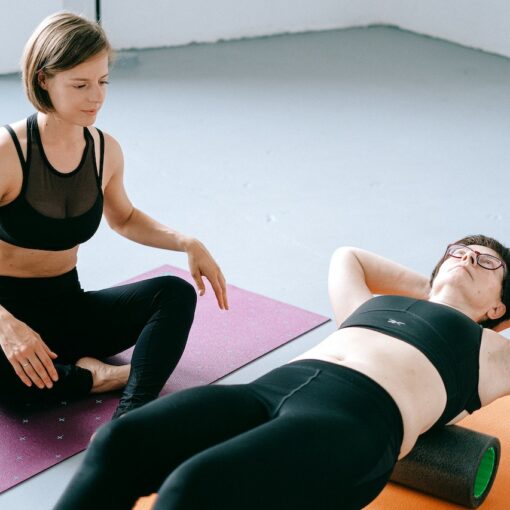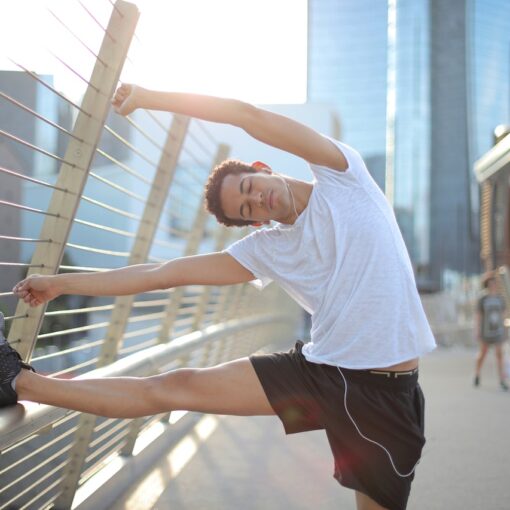Cycling is often regarded as an excellent complementary exercise for runners looking to improve their fitness and aid in recovery. The low-impact nature of cycling helps to alleviate the strain on joints and muscles that occur during high-impact activities such as running. This makes it an ideal choice for athletes who want to maintain their cardiovascular health while reducing the risk of injury.
Incorporating cycling into a runner’s training routine can provide several benefits, from building muscular strength to increasing endurance. By targeting different muscle groups with less impact on the body, cycling can aid in the recovery process and help maintain fitness levels without putting additional stress on the muscles and joints. Moreover, it serves as an effective cross-training activity, keeping both the muscles and lungs active and ready to tackle subsequent running sessions.
Runners may find that including cycling in their exercise regimen not only contributes to faster recovery but also enhances their overall performance. The balance between high-impact running and low-impact cycling allows athletes to optimize their training, giving them the best of both worlds for improved fitness and reduced risk of injury.
Benefits of Cycling for Running Recovery
Low Impact Alternative
Cycling is a great low impact alternative to running, allowing your joints and muscles to recover from strenuous workouts. Your feet remain on the pedals, reducing the impact on your knees, hips, and ankles, making it an ideal choice for cross-training and recovery days.
Active Recovery and Blood Flow
Incorporating cycling as an active recovery exercise can help increase blood flow to tired muscles, promoting quicker healing and reducing muscle soreness. This is particularly useful after a long run or an intense workout session, as increased blood flow helps to remove waste products and deliver essential nutrients to the recovering muscles.
Reduced Risk of Injury
Cycling can help you maintain cardiovascular fitness while reducing the risk of injury from overuse and impact-related injuries. This is especially important for long-distance runners, who tend to experience higher rates of injury. By switching between running and cycling, you can give your body the opportunity to recover while still staying active.
Improve Cardiovascular Health
Cycling not only aids in running recovery but also contributes to cardiovascular health. As a form of aerobic exercise, cycling can improve heart health, lung capacity, and overall endurance. Combining cycling with running in your training regime makes for a well-rounded approach to maintaining a healthy heart.
Mental Health Benefits
Lastly, cycling can provide a refreshing change of pace and scenery from your regular runs, leading to mental health benefits. Engaging in a different form of exercise helps keep your workouts interesting, reducing the risk of burnout and improving overall well-being.
Combining cycling with running is an effective way to improve recovery, stay injury-free, and maintain cardiovascular health during your training. Incorporating this low-impact cross-training activity will not only benefit your physical health but also your mental well-being.
Major Running Muscles Supported by Cycling
Quadriceps and Hamstrings
Cycling is an excellent form of cross-training for runners, as it targets and strengthens some key running muscles, including the quadriceps and hamstrings. The quads and hamstrings are essential for propelling you forward during a run and improving overall leg strength. Incorporating cycling into your training can help you develop these muscles without putting too much stress on your joints.
Cycling activates the quadriceps to push the pedals down while the hamstrings work to pull the pedals back up. This motion complements running, where your body weight is constantly transferred between the quads and hamstrings as you move forward.
Calves and Glutes
Cycling also targets the glutes and calves, which are crucial for maintaining proper running form and providing stability. The glutes work alongside the quads and hamstrings to generate power for both cycling and running, while the calves are responsible for pushing off the ground in both activities.
When cycling, the calves need to contract and relax with each pedal stroke, helping to build strength and flexibility in the muscle. Similarly, the glutes must engage to help drive the legs, especially when climbing hills or sprinting.
Incorporating cycling into your training routine can provide a comprehensive workout for your major running muscles, including the quadriceps and hamstrings, as well as the glutes and calves. This will not only help you recover from your runs but also improve your overall running performance.
Cycling Workouts for Runners
Cycling can be a fantastic tool for aiding running recovery and improving performance. Incorporating cycling workouts into your training program can have several benefits, including building strength, increasing aerobic capacity, and promoting active recovery. This section will discuss different types of cycling workouts for runners, divided into three sub-sections: Outdoor Cycling, Indoor Spin Classes, and Stationary Bike Workouts.
Outdoor Cycling
Outdoor cycling is an excellent way for runners to incorporate variety into their training while still maintaining fitness. Some effective outdoor cycling workouts for runners include:
- Hill Intervals: Find a moderate-to-steep hill and ride uphill, focusing on maintaining a consistent pace. This will build strength and power needed to tackle hills during runs.
- Speed or Sprint Intervals: Incorporate short bursts of high-intensity sprints into your ride to improve speed and cardiovascular endurance.
Remember to always warm up and cool down during these workouts to reduce the risk of injury.
Indoor Spin Classes
Indoor spin classes offer a structured and high-energy environment for runners to work on their cycling skills. These classes frequently include:
- Climbing intervals: Using a spin bike’s resistance settings, simulate riding uphill to improve leg strength and power.
- Tempo rides: Maintain a steady, challenging pace for an extended period to work on aerobic endurance.
- Intervals: Incorporate periods of high-intensity riding followed by recovery periods to build cardiovascular fitness.
Check your local gym or fitness studio for spin class offerings.
Stationary Bike Workouts
Stationary bike workouts are a convenient option for runners to work on their cycling skills at home or in a gym. Some useful stationary bike workouts for runners include:
- Recovery Rides: Ride for 30 to 40 minutes with light resistance, focusing on easy pedaling. This helps to increase blood flow and flush out lactic acid from muscles, aiding recovery.
- Indoor Rolling Hills: Adjust the resistance settings to simulate riding uphill and downhill, working on leg strength and power.
- Progressive Intervals: Start with a low resistance and gradually increase it over time, focusing on maintaining a consistent cadence.
These workouts can greatly benefit your running performance, so don’t hesitate to incorporate them into your training program.
Incorporating Cycling into Your Training Plan
Complementary Workouts
Cycling can greatly complement a runner’s training plan, particularly for those who are injury-prone or looking to vary their workouts. Engaging in cycling allows runners to build strength and endurance in different muscle groups, reducing the risk of injury from overuse. Additionally, switching between running and cycling can help prevent mental burnout, keeping both the body and mind engaged during training.
Interval and Speedwork Training
Integrating cycling speed or sprint intervals into your training plan can improve your running performance. For example, you can alternate between periods of high-speed cycling and low-speed recovery, mimicking the intensity changes experienced during running intervals. This type of cross-training helps boost overall cardiovascular fitness, enhancing endurance and speed for runners.
Conditioning on Non-Impact Days
For runners looking to maintain their fitness on non-impact days, incorporating cycling into the training plan can provide a low-impact form of conditioning that still builds aerobic capacity. Cycling allows you to rest your joints and muscles from the impact of running while keeping your heart rate up for effective cardiovascular training. By working cycling into your training plan, you can continue to improve your running performance without overstressing the body.
Additional Considerations
When incorporating cycling into your running recovery routine, there are a few factors to consider:
- Running shoes: Although cycling does not require the same footwear as running, it’s essential to wear comfortable shoes that support your feet during cycling. Proper cycling shoes can enhance performance and prevent potential injuries while also providing a different type of support than running shoes.
- Body weight: Cycling can help alleviate the impact of body weight on your joints, as opposed to running. This is particularly beneficial for heavier individuals, as it reduces the risk of joint pain and injury during active recovery.
- Beginners: For beginners in both running and cycling, it’s crucial to adapt slowly to avoid overtraining or injury. Start by incorporating shorter, easier cycling sessions into your recovery routine and gradually increase the intensity and duration as you build fitness and endurance.
- Outdoors vs. indoors: Both outdoor and indoor cycling can be effective for running recovery, depending on your personal preferences and available resources. Outdoor cycling provides the opportunity to enjoy nature and fresh air, while indoor cycling allows for more controlled conditions and the convenience of exercising at home or in a gym.
- Balance: While cycling can improve muscle balance by targeting muscles not heavily worked during running, it’s essential to incorporate additional strength and flexibility exercises for a well-rounded recovery routine.
- Active recovery and lactic acid: Cycling is an excellent form of active recovery, as it helps to increase blood flow to your muscles and can flush out lactic acid, reducing muscle stiffness and soreness. Lactic acid is produced during high-intensity workouts and can contribute to muscle fatigue.
- Recovery workout: A cycling recovery workout should be tailored to your needs and fitness level, focusing on a comfortable pace and intensity that allows for proper recovery without causing additional stress or fatigue.
- Personal preferences: Ultimately, it’s essential to consider your personal preferences, goals, and limitations when incorporating cycling into your recovery routine. Make sure to listen to your body, modify your training plan as needed, and consult with a coach or specialist if necessary.




